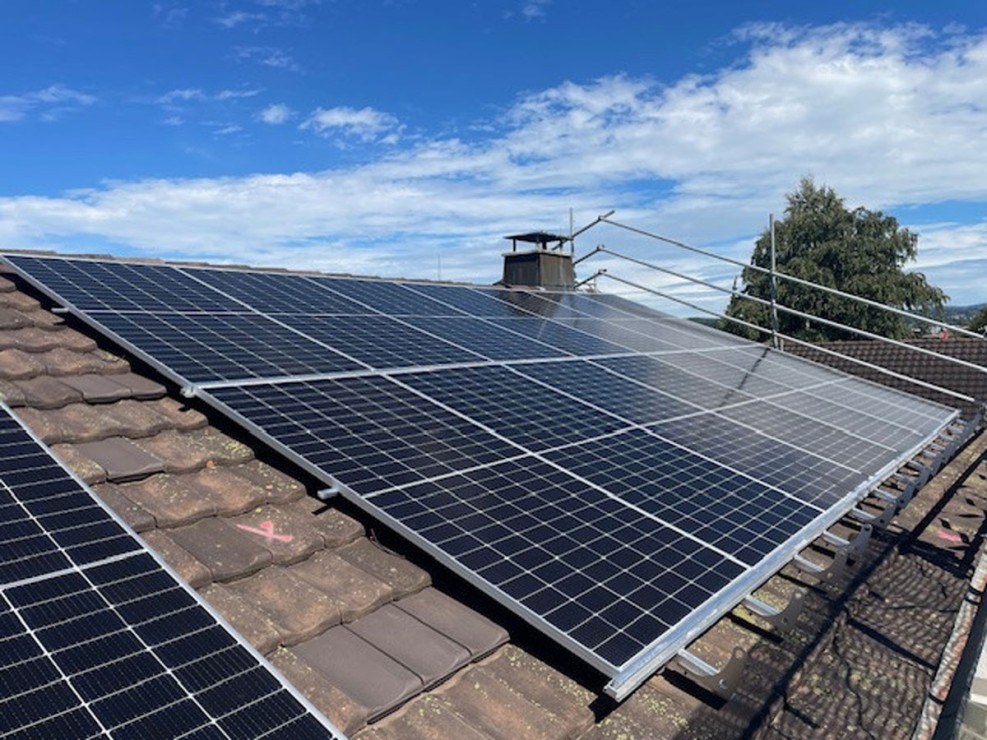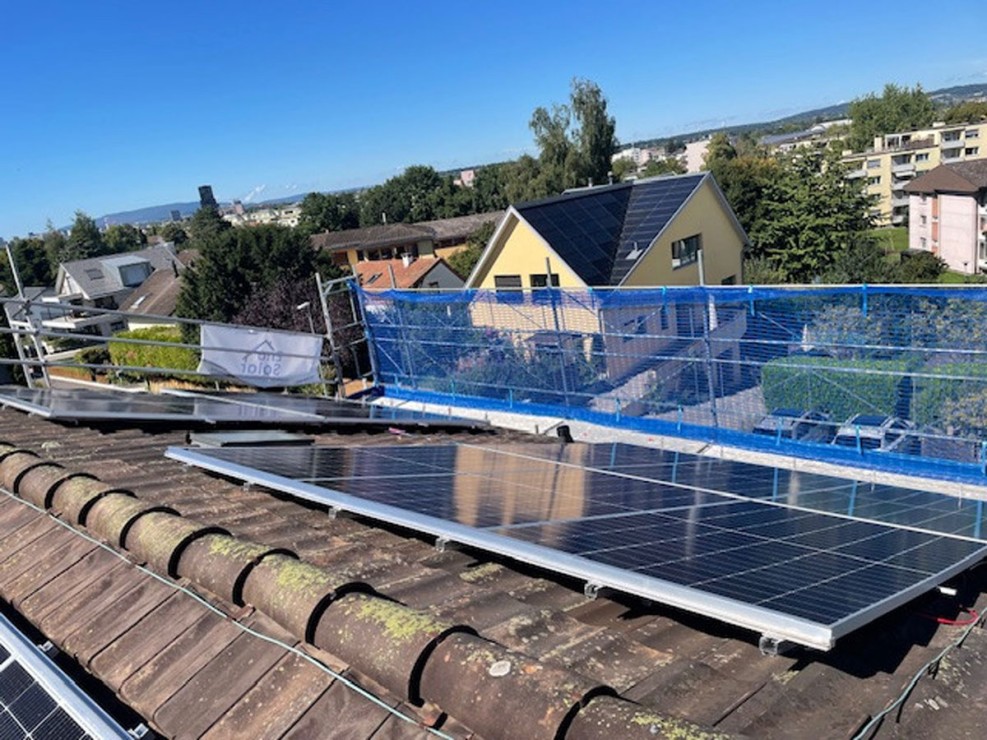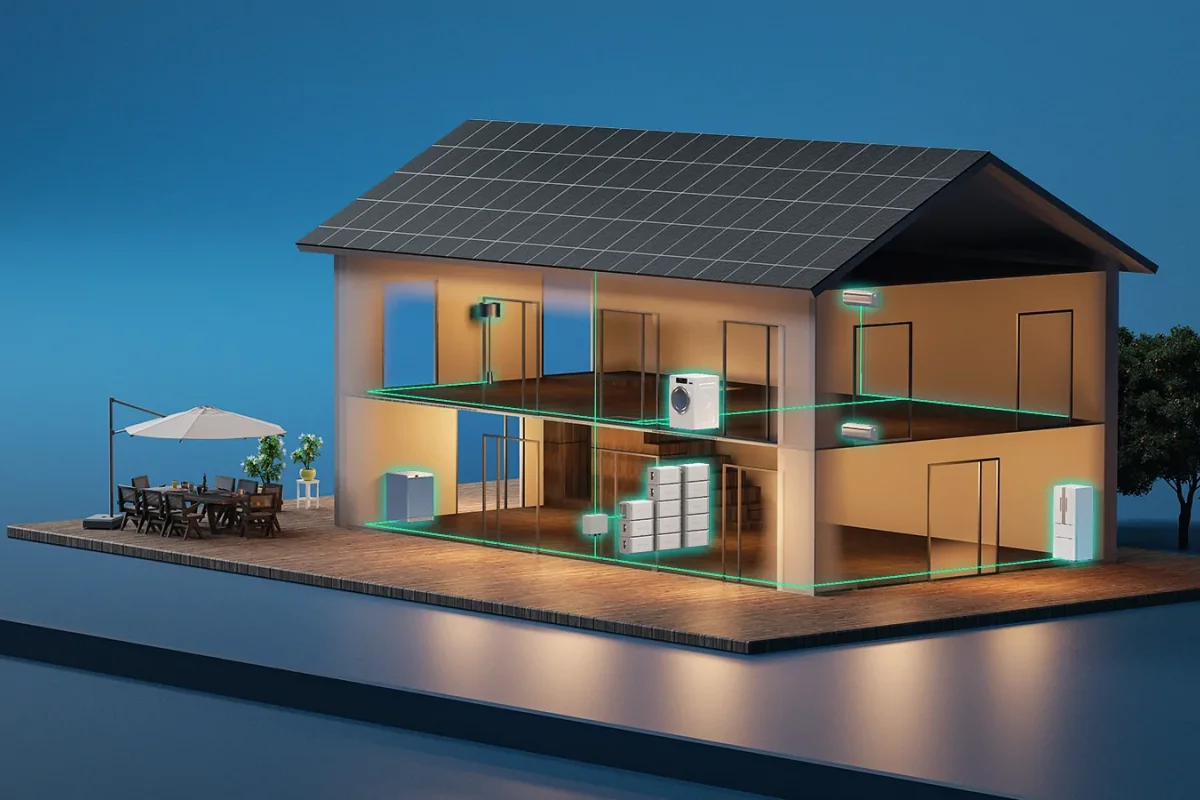
Energy self-sufficient single-family home in Zurich, Switzerland?
There are ongoing discussions about energy supply, focusing either on the "imminent" merger of EU networks or on alternative energy sources. Although, in our view, thorium in particular would be a more than suitable addition to photovoltaics as a local and decentralized nuclear power plant. The larger the network, the more fragile and vulnerable the power supply becomes.
As a distributor of Bluetti energy systems, stationary and mobile inverters with batteries for storage, as well as Blue Sun photovoltaic PV modules and water-cooled inverters with batteries for industrial facilities, shopping centers, or mountain stations, we support both end customers and their photovoltaic installation companies in the selection and dimensioning of components for projects, but do not offer final installation.
In the canton of Zurich, a double single-family home, where both parties moved in, promoted electricity self-sufficiency. To this end, 26 KWp were installed on the roof, i.e., 13 KWp for each party, as well as the Bluetti ESS 600 on each side as a hybrid inverter with grid feed-in and 40 KWh battery storage per side.
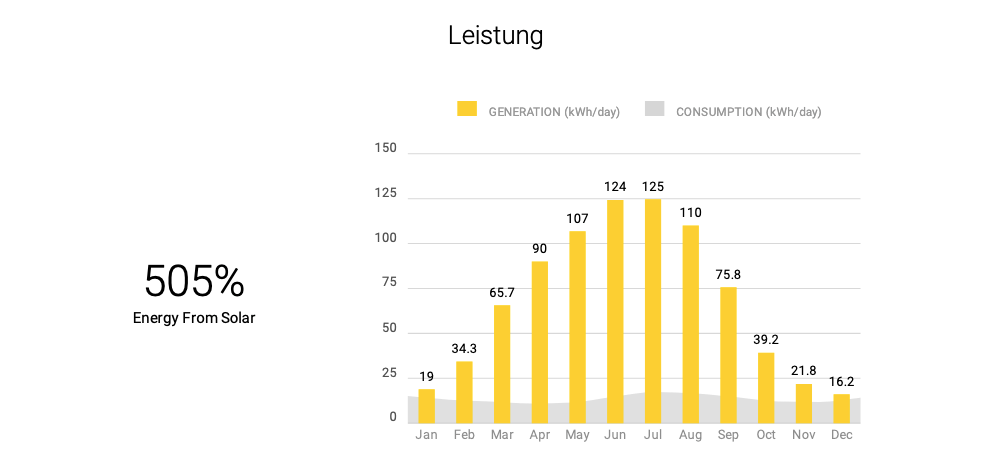
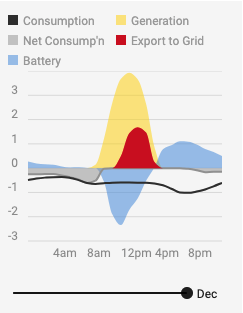 The property generates over 500% more electricity than it needs for its own annual consumption and feeds the surplus into the grid. This dimensioning ensures that both single-family homes can be adequately supplied during the weak winter months of December and January. In the worst case, depending on the fog and cloud situation in the two winter months, electricity is drawn from the grid for a maximum of 3-11 days per year.
The property generates over 500% more electricity than it needs for its own annual consumption and feeds the surplus into the grid. This dimensioning ensures that both single-family homes can be adequately supplied during the weak winter months of December and January. In the worst case, depending on the fog and cloud situation in the two winter months, electricity is drawn from the grid for a maximum of 3-11 days per year.
Both sides have 40 kWh lithium storage, which can be filled within 3 hours on a sunny morning thanks to fast-charge technology. Each single-family home side feeds 12 kWp net into the inverter. The inverters automatically regulate consumption, what is fed into the batteries, when power is drawn from the batteries, what is fed into the grid, and thus also bridge the energy consumption on rainy or foggy days.
Project details
- Total roof area of double detached house: 288 m² for (144 m² (9 meters long, 8 meters channel to gable, east and west, two sides each, each half of the house)
- 12 KVA inverter with 12KW solar input distributed across 2 MPPT controllers per half of the house
- 13 kWp net per half of the house
- 40 KWh lithium phosphate batteries with FastCharge technology
- Gross system capacity: 14.5 kW per half of the house
- Annual photovoltaic production: 12,649 kWh
- Monetary cost savings on electricity bills over 20 years: CHF 62,500
- Investment volume: CHF 21,000 including batteries
- Amortization period: 8.5 years including Pronova subsidies.
- Net savings: CHF 41,500 over 20 years, or CHF 2,075 per year
Even in the low-sunlight winter months, excess energy is exported to the grid. Over the course of the year, the feed-in tariff makes a significant contribution to faster amortization, including the batteries, which also protect against power outages and provide the necessary residual energy at night. If enough PV electricity is produced during the day, the battery can also feed back into the grid.
Morning – Afternoon – Night
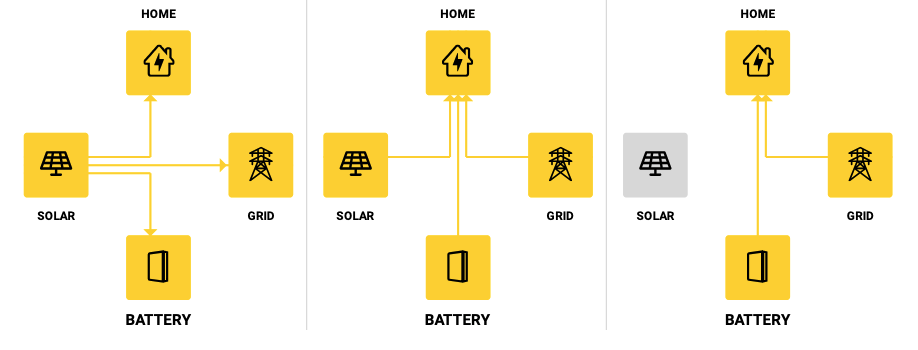
At the same time, the customer had a new 800L hybrid hot water boiler and a new heating system installed, as the new systems are much more efficient in terms of electricity consumption than those from 25 years ago.
Conclusion: In winter years with little fog, the single-family home achieves 99% electricity self-sufficiency, and around 96% in years with a lot of fog. In terms of costs, the family will receive significantly more in feed-in tariffs in all coming years than they will pay in costs to the local electricity company.
iQcom products in use:
- Bluetti ESS 600 (2 units connected per half of the house)
- Bluetti B500 modular energy storage (8 x 5KWh modules per half of the house)
- Bluesun HEX 560W (26 units per half of the house)
The K2 mounting material, cabling, and scaffolding were provided by the local solar installer. Since the tile roof is north/south facing, both halves of the roof, with recesses for the chimney and skylight windows, were fully covered with the BlueSun BSM560M10-72HPH modules, with the cabling running over the chimney through a specially laid pipe to the basement, where the two Bluetti EP 600 energy systems with 40 kWh batteries are also located.
Read also:
Downloads
Products used
-
EP600-B500
- 11249.00
- 6-12KVA Hybrid Inverter | 10KWh - 80 KWh ESS
- EP600-B500
-
Bluetti B500 Battery
- 4399.00
- Bluetti B500 battery expansion module 5KWh
- Bluetti B500 Battery


